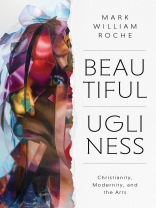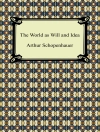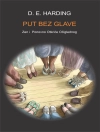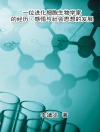This book probes the intersection of the beautiful and the ugly, offering a systematic framework to understand, interpret, and evaluate how ugliness can contribute to beautiful art.
Many great artworks include elements of ugliness: repugnant content, disproportionate forms, unresolved dissonance, and unintegrated parts. Mark William Roche’s authoritative monograph Beautiful Ugliness: Christianity, Modernity, and the Arts challenges current practices of the dominant aesthetic schools by exploring the role of ugliness in art and literature. Roche offers a comprehensive and unique framework that integrates philosophical and theological reflection, intellectual-historical analysis, and interpretations of a large number of works from the arts. The study is driven by the recognition that, though ugliness is usually understood as the opposite of beauty, ugliness nonetheless contributes significantly to the beauty of many artworks.
Roche’s analysis unfolds in three parts. The first offers a refreshing conceptual analysis of ugliness in art. The second considers the history of ugliness in art and literature, with special attention to its role in Christian art and its central place in modern and contemporary art. The third synthesizes earlier material, offering a taxonomy of beautiful ugliness derived from Hegelian philosophical categories. Roche mesmerizes the reader with an extraordinary range of literary scholarship and expertise, with a particular focus on English, Latin, and German literature, and with a broad range of analyzed phenomena, including fine arts, architecture, and music.
Including 63 color illustrations, Beautiful Ugliness will draw in readers from multiple disciplines as well as those from beyond the academy who wish to make sense of today’s complex art world.
Зміст
List of Illustrations
Acknowledgments
Abbreviations and Translations
Introduction
Part One. Conceptual Framework
1. Unveiling Ugliness
2. Aesthetic Categories
3. Intellectual Resources
4. Imperial Rome
5. Late Medieval Christianity
6. The Theological Rationale for Christianity’s Immersion in Ugliness
Part Two. Historical Interlude
7. Modernity
8. Modernity’s Ontological and Aesthetic Shift
Part Three. Forms of Beautiful Ugliness
Styles of Beautiful Ugliness
9. Repugnant Beauty
10. Fractured Beauty
11. Aischric Beauty
12. Beauty Dwelling in Ugliness
13. Dialectical Beauty
14. Speculative Beauty
Conclusion
Works Cited
Index
Про автора
Mark William Roche is the Rev. Edmund P. Joyce, C.S.C., Professor of German Language and Literature, concurrent professor of philosophy, and former dean of the College of Arts and Letters at the University of Notre Dame. He is the author of many books, including Realizing the Distinctive University (University of Notre Dame Press, 2017) and Why Choose the Liberal Arts? (University of Notre Dame Press, 2010), which won the Frederic W. Ness Book Award.












